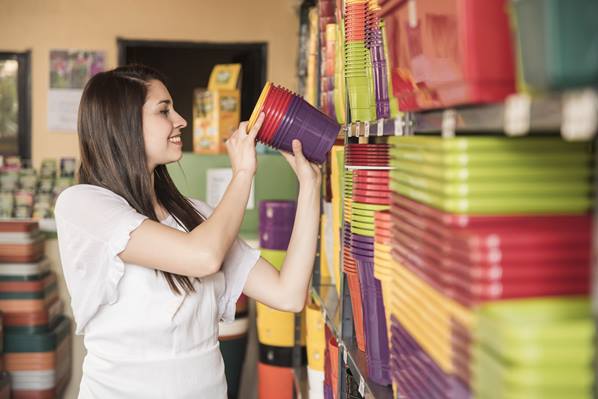
Did you know that the colors used in your customer service environment can significantly impact how customers perceive and interact with your brand? So much so, that 80% of consumers believe that color increases brand perception during the customer experience.
In this article, we’ll delve into the science of color psychology and examine how it can be leveraged to enhance customer service.
Understanding Color Psychology
Color psychology studies how different hues affect human emotions and behaviors. For centuries, colors have been used to convey messages, evoke emotions, and even drive actions. While the interpretation of colors can be somewhat subjective and influenced by cultural factors, certain color associations are widely recognized.
Common Color Associations:
- Red: Passion, urgency, attention
- Blue: Trust, calm, professionalism
- Green: Health, tranquility, nature
- Yellow: Optimism, energy, warmth
- Black: Sophistication, power, elegance
- White: Cleanliness, simplicity, purity
The Impact of Color Psychology on Customer Service
When it comes to customer service, the environment in which interactions take place can significantly affect a customer’s experience. From the color of your uniforms to the design of your website, thoughtful color choices can create a more positive and effective customer service environment.
1. Building Trust with Blue
Blue is often associated with trust, reliability, and professionalism—qualities that are essential for excellent customer service. Many financial institutions and tech companies use blue in their branding to convey security and dependability.
Application:
- Uniforms and Branding: Incorporate shades of blue in customer service uniforms and branding materials to foster a sense of trust.
- Digital Interfaces: Use blue in your website’s design and customer service portals to reassure customers of your reliability.
2. Creating a Calm Environment with Green
Customer service can sometimes involve stressful situations. Green, associated with tranquility and relaxation, can help create a calming atmosphere, making it easier for customers to feel at ease.
Application:
- Physical Spaces: Use green accents in waiting areas and customer service desks to promote relaxation.
- Digital Spaces: Integrate green elements in chat windows or support pages to reduce customer anxiety.
3. Energizing Interactions with Yellow
Yellow is a vibrant and energetic color that can evoke feelings of happiness and optimism. However, it’s essential to use yellow sparingly, as too much can be overwhelming.
Application:
- Highlighting Information: Use yellow to highlight key information, special offers, or important notices in customer communications.
- Accents and Details: Incorporate small yellow accents in your physical and digital customer service environments to add warmth and positivity.
4. Conveying Professionalism with Black
Black exudes sophistication and elegance, which can enhance the perception of your brand’s professionalism. It’s often used in high-end or luxury brands to convey a sense of exclusivity.
Application:
- Uniforms and Furnishings: Use black in customer service uniforms and office furnishings to create a sleek, professional look.
- Digital Design: Incorporate black in your website’s design to give it a polished and sophisticated appearance.
5. Keeping it Clean with White
White represents cleanliness and simplicity, making it ideal for creating an uncluttered and straightforward customer service experience. It can also make other colors stand out more effectively.
Application:
- Web Design: Use white space strategically in your website’s design to improve readability and focus attention on essential elements.
- Office Spaces: Maintain a clean and minimalist design in customer service areas to convey efficiency and clarity.
Examples of How Brands Use Color in Customer Experience:
McDonald’s: The use of red and yellow in their branding and store design is known to stimulate appetite and create a sense of urgency, driving customers to make quick decisions. This color scheme is strategically used to enhance the customer experience by influencing purchasing behavior.
Apple: Apple’s minimalistic approach to design incorporates white and silver tones in their products and stores. These colors evoke a sense of simplicity, elegance, and sophistication, aligning with the brand’s premium image and creating a seamless and premium customer experience.
Starbucks: Starbucks’ iconic green logo and interior design use earthy tones and green accents to create a warm and welcoming ambiance. This color choice is aimed at promoting relaxation and social interaction, enhancing the overall customer experience in their coffee shops.
Coca-Cola: Coca-Cola’s classic red branding is associated with energy, excitement, and passion. By consistently using red in their marketing materials and packaging, Coca-Cola creates a strong emotional connection with consumers, making their product stand out on shelves and enhancing brand recognition and loyalty.
Nike: Nike’s bold use of black and white in their branding and products conveys a sense of empowerment, strength, and innovation. These colors are strategically chosen to evoke a feeling of athleticism and performance, enhancing the overall customer experience by aligning with the brand’s values and positioning.
Understanding and applying color psychology in customer service can transform how customers interact with your brand. By thoughtfully incorporating colors that evoke trust, calmness, optimism, professionalism, and cleanliness, you can create a more positive and effective customer service experience.
Whether through physical spaces, digital interfaces, or branding materials, leveraging color psychology can give you a competitive edge in delivering exceptional customer service.
About the Author
 Ian Miller is Editor of Customer Service Manager Magazine – the leading resource and community for customer service professionals.
Ian Miller is Editor of Customer Service Manager Magazine – the leading resource and community for customer service professionals.




